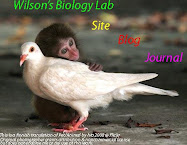
A husband and wife team at the University of Washington recently ‘cured’ color-blindness in two monkeys. Monkeys are similar to humans in that sometimes they are born with a defective or missing gene that makes it impossible for them to differentiate between red and green. It was once believed that this problem could not be fixed because scientists thought that the brain could not process colors it had never processed before. However, this finding proves that the brain is capable of processing new colors if there are the receptors in the eye. It is accepted that color blindness is a hereditary trait passed on from generation. It only takes one gene to malfunction of be nonexistent for colorblindness to take effect. So the researchers at the University of Washington created a virus that would inject this gene into the eye. The virus did and within twenty weeks the monkeys had gained to ability to see red and green as different colors. However, their ability to distinguish was not as good as monkeys who were born free of color-blindness, but one researcher believes that it is not impossible to give them the vision of standard monkeys. He believes that the treatment just requires improvement to give perfect sight to these monkeys and possibly humans.
The researchers at the University of Washington believe that someday this could be a safe and successful procedure to conduct on humans. They believe that this would be a huge boom in the field of colorblindness as without much risk people could see in full color. The researchers do not want to stop at just green red colorblindness. They believe this treatment can be applied to those with achromatopsia, which is blindness to all colors. They believe this treatment could help people with degenerative sight disorders, ones which where sight gets worse as the person gets older. However to do this researchers will have to make sure that these treatments will target only certain photoreceptor cells for them to start testing.
This experiment brings hope to population that has been plagued by a disorder to various degrees. To some this would not be a great revelation, as in someone with simple red-green colorblindness. For others with more serious disorders this could not only allow them to see the world in a different way it would open up a realm of possibilities. Some of us might take for granted our ability to see different colors but it plays a vital role in things as basic as our commute to choosing what we want to wear. This treatment would make certain peoples lives much easier but also open up doors to new careers, which might have been denied to them because of the disability they have in their sight.
Hayes and Graham




